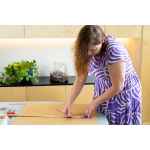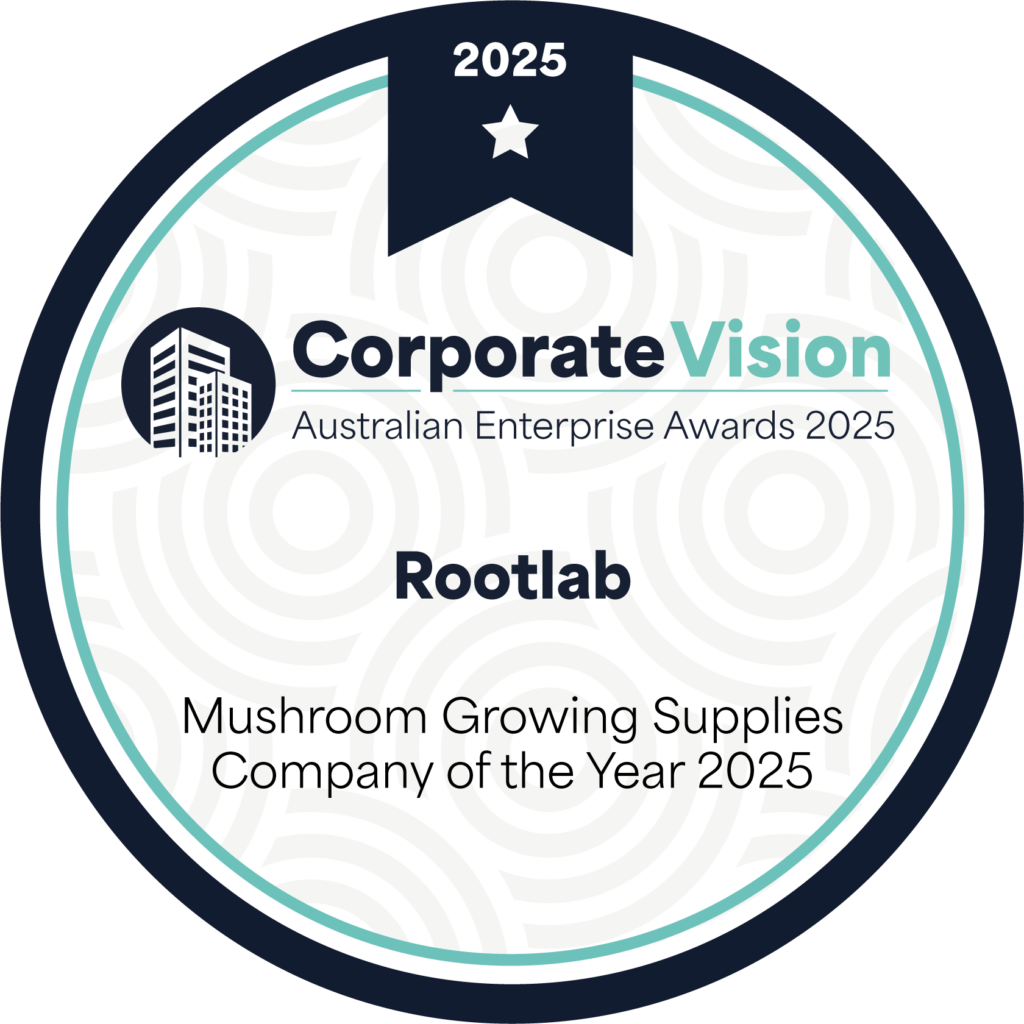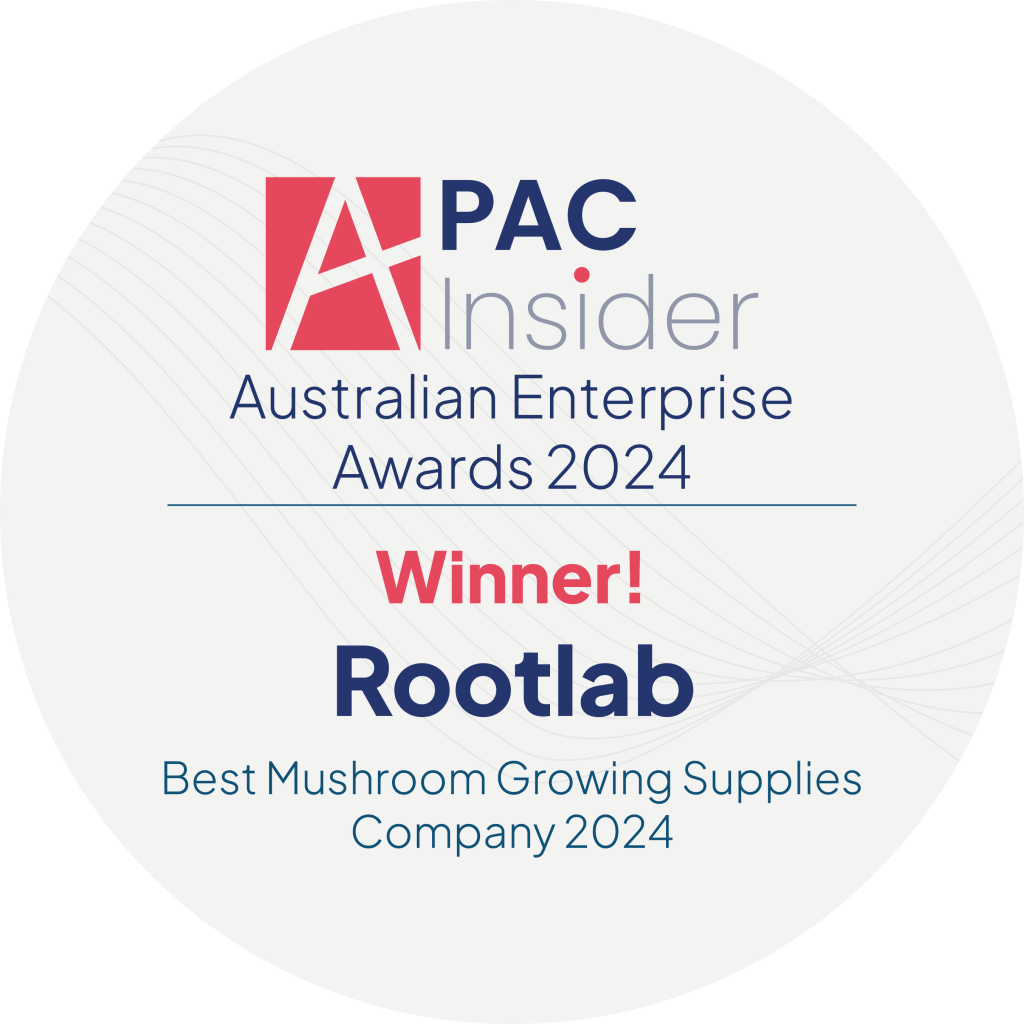Introduction to mycelium based composites (MBC’s)
Mycelium is the rootlike structure of the fungus on which mushrooms grow. It is through mycelium that the fungus searches for and absorbs nutrients from the environment.
Fungi have many complex and important roles in nature. As great decomposers, they produce enzymes that can break down a vast array of complex compounds into simple sugars and amino acids. This includes enzymes that break down lignin, cellulose, latex, and synthetic petroleum-based polymers like polypropylene and paraffin wax.
Mycelium are quite complex to design with because they can decompose, and have many other interesting physical characteristics. Mycelium can take almost any shaped mold, it’s hydrophobic, fire resistant, insulating, and can take on several mechanical characteristics and haptics through interactions between substrate choice, growth conditions, and finishing treatments. The resulting materials can be rigid, flexible, spongy, leatherlike, or take on features of the substrate.
In exploring the potential of MBCs, there is an opportunity to support circular economies that can utilize existing waste streams as well as facilitate design solutions that can reduce future post-consumer waste.
Making growth forms at home
You can easily get started with mycelium with some basic tips. You can use your imagination to discover suitable mold forms around the home, but remember that material coming into contact with the mycelium growth medium needs to be non-porous to make demolding easy. I recommend you repurpose existing disposable plastic packaging because they can be easily cleaned, sanitized, and reused.
Another material that works well is cardboard, which you can shape anyhow you want to suit your purpose. All the surfaces coming into contact with the inoculated medium should be covered with a layer of plastic tape. One advantage of cardboard molds is that they can be easily pulled apart, which enables greater control over the size and shape of forms.
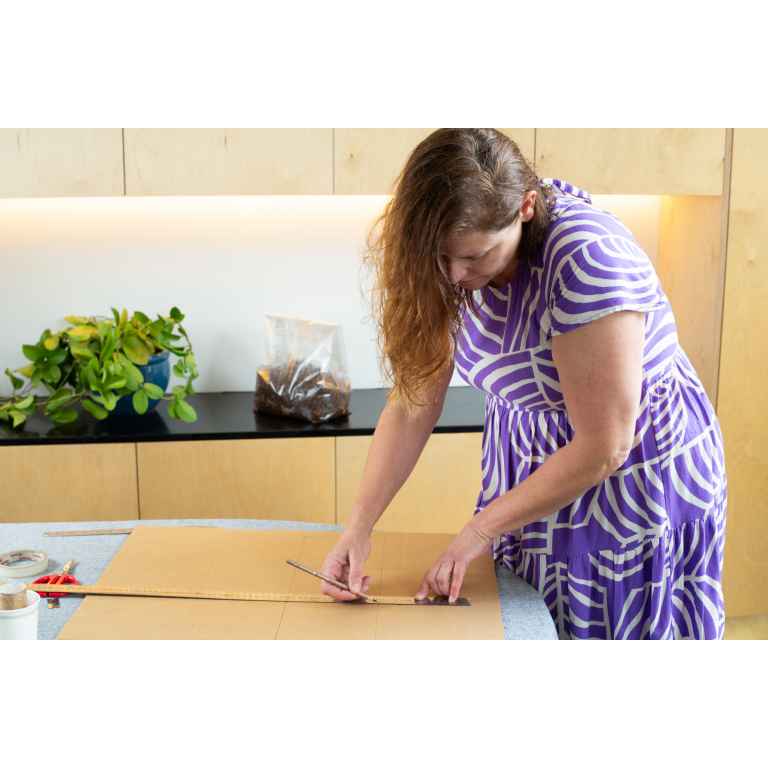
When incubating mycelium-based composites, it’s important to remember that growing larger forms can sometimes promote anaerobic conditions in the centers of objects. When you make objects with depths under 25-30 cm without compressing the medium unnecessarily, it helps ensure there is adequate oxygen throughout the substrate. Another way to tackle this issue is to incubate separate parts and fuse them once colonized. Simply attach the pieces where you want them to go and leave the object inside a sealed box for 24-48 hours. Fungi can create networked joins that are structurally the same as the rest of the form.
Releasing objects from molds and leaving them in a no-oxygen environment, such as a sealed box, will also facilitate the development of a coating of aerial mycelium. This white coating, mainly composed of chitin, gives MBCs a great amount of resilience in unsubmerged, yet exposed environmental conditions.
General materials needed for making and inoculating growth forms at home
- Mycelium-inoculated growth medium
- Cardboard
- Found plastic or cardboard packaging
- Masking tape
- Plastic packing tape
- Cling wrap
- Micropore tape
- Disposable gloves
- Scissors
- Scalpel
- Isopropyl alcohol 70%
Mold examples
Make a candle holder with two plastic containers
- Collect two containers of different sizes that can be nested, one inside the other. I’ve chosen two round plastic takeaway containers.
- I recommend filling the mold below the level of the lip ridge or cut this away.
- Either mark the height you want on the outside or do it by eye when filling.
Make a pencil holder with a coffee cup and toilet roll insert
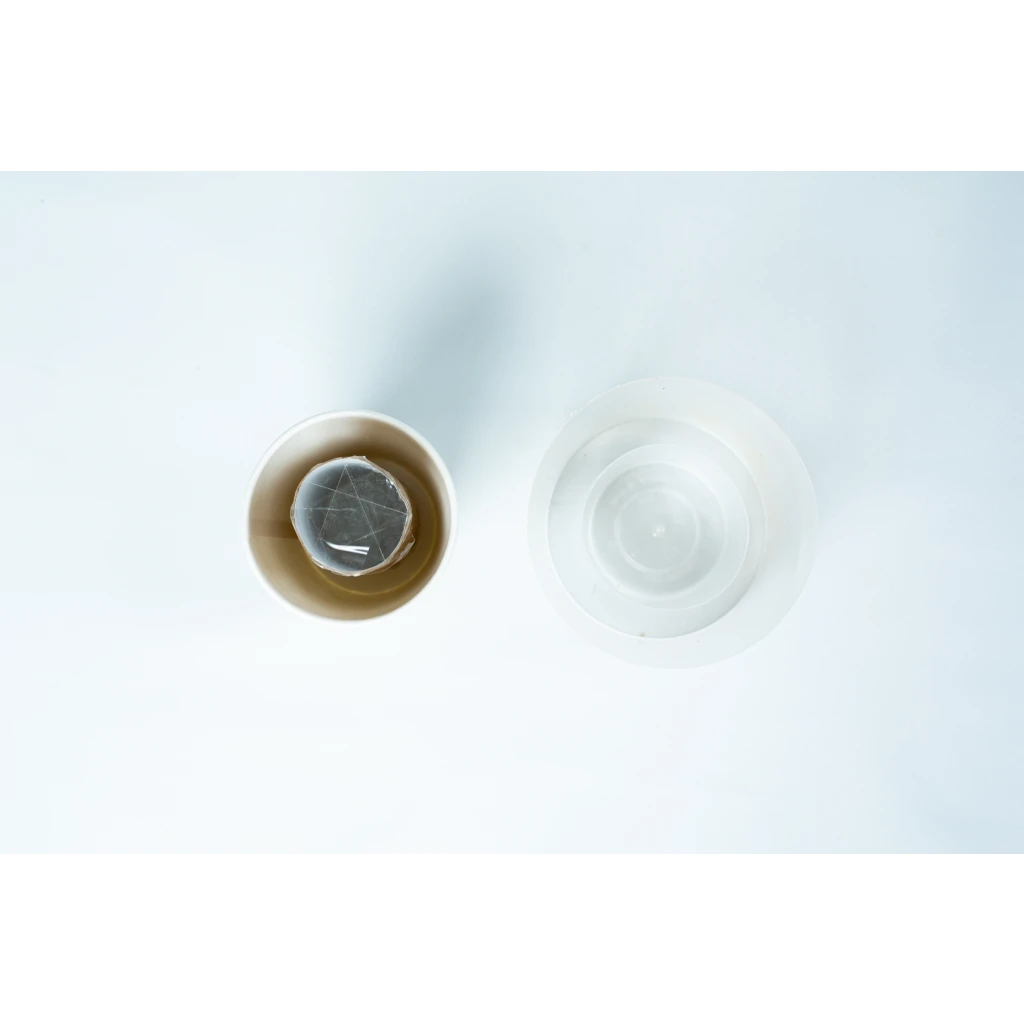
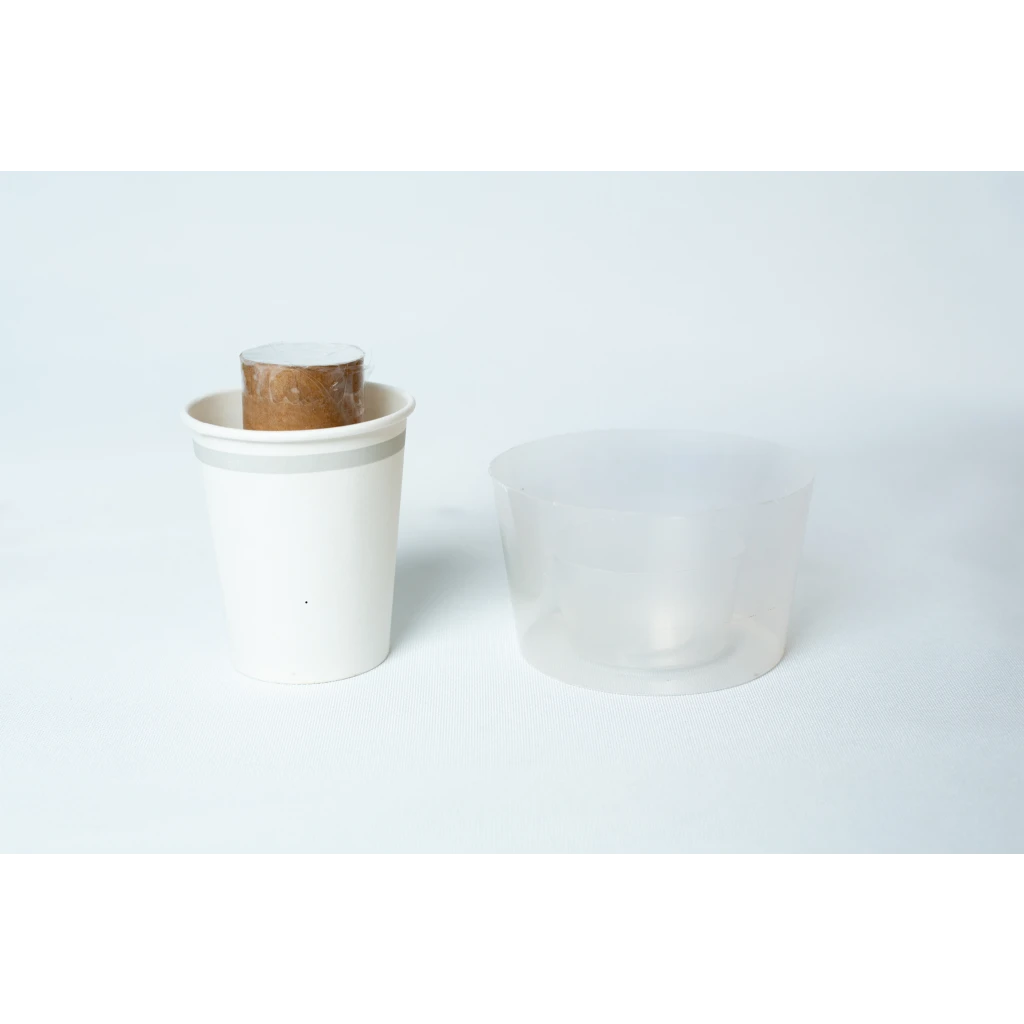
- Collect an unused coffee cup and a cardboard toilet roll insert.
- The cup will form the outside wall, and the toilet roll insert will form the interior wall.
- The base can be covered with thin strips of plastic packing tape layered to take an asterisk shape. Once this is done, a top layer can be added and the excess cut away. Both ends can be covered with tape to ensure that the mycelium growth medium doesn’t enter the inside when filling the mold.
- Cover the outside surface of the insert with plastic packing tape, making sure that there are no gaps in the plastic coating.
- The coffee cup will not need plastic packing tape.
Make a square container with cardboard and packing tape
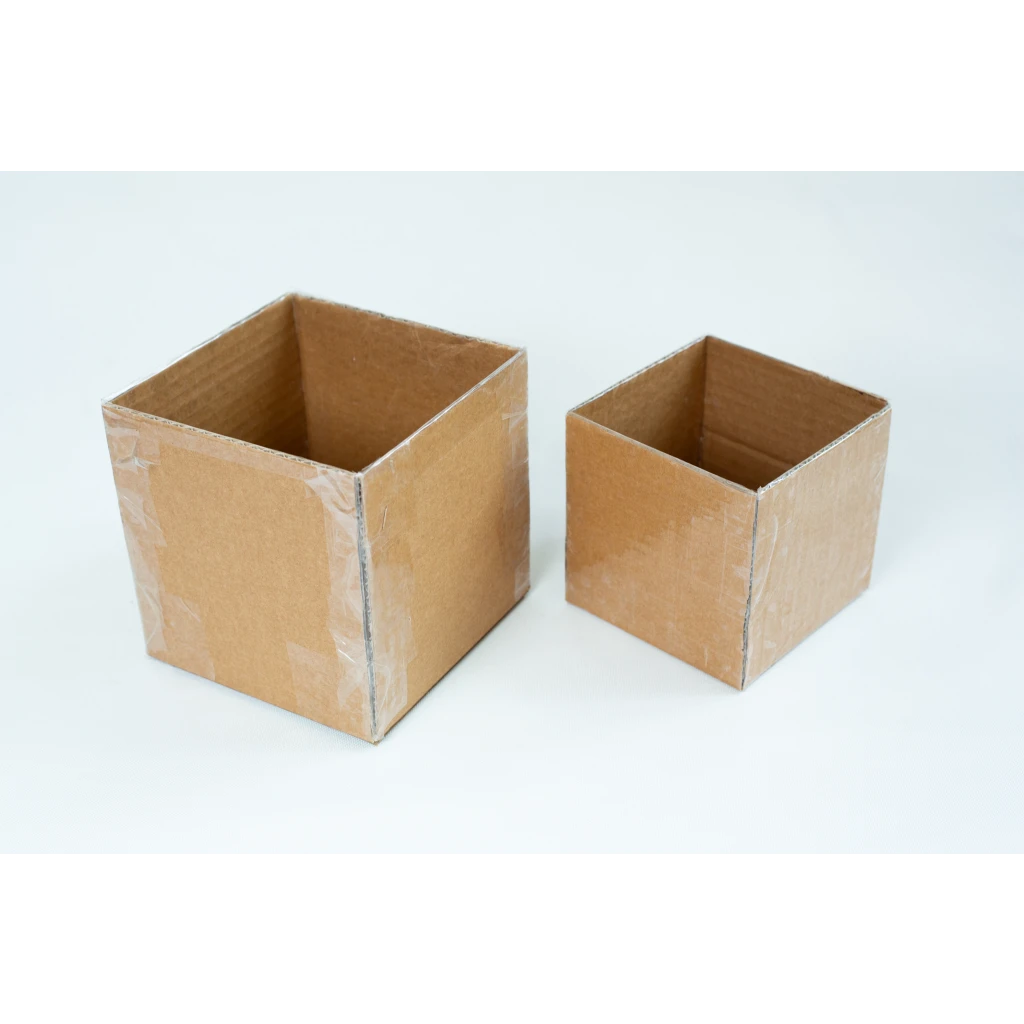
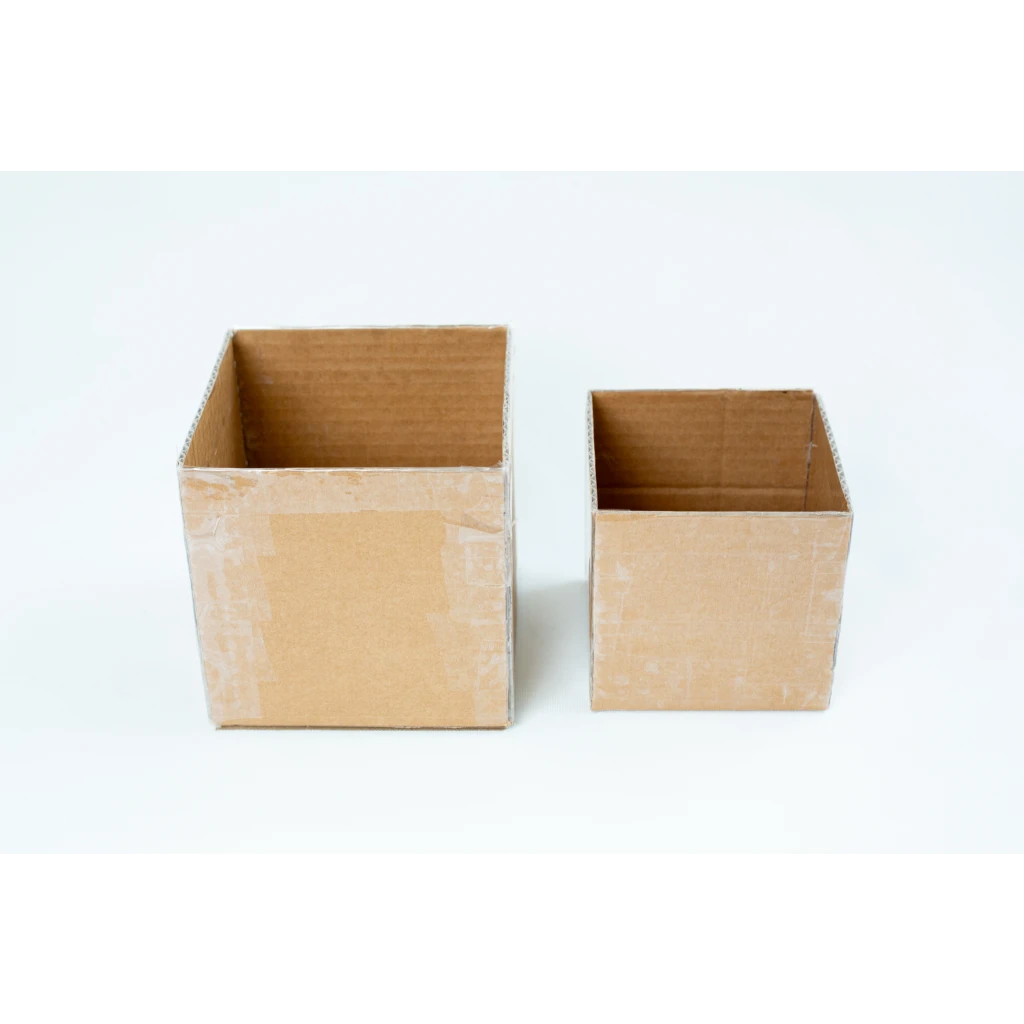
- Corrugated cardboard and packing tape are great materials for making a variety of interesting shapes. You can find templates for different shapes online.
- To make a box, you will need to measure out two cube patterns. Decide on the size you want the outside of the container to be. Measure out a row of three squares in one direction, and perpendicular to this row, measure out two squares on either side of the middle square.
- For the inside cube, you will need to make the shape smaller to ensure the walls have adequate thickness. It’s advisable to have the walls at least 1.5 cm thick. For a 1.5 cm wall, the interior box will need to be made from 3 cm smaller squares, as this will allow a 1.5 cm gap on each side
- Once you have cut out the two patterns for the square containers, cut along each seam with a scalpel. Be careful to not cut the cardboard all the way through.
- Bend each seam to see how the box forms. Each cube will be open at the top. The interior cube can be covered with tape at the top before filling.
- Before assembling, cover the forms with plastic packing tape to create a non-porous layer between the cardboard and inoculated growth medium. Remember to put the tape on the inside of the larger box and on the outside of the smaller box.
Make a star shape tea light holder with cardboard
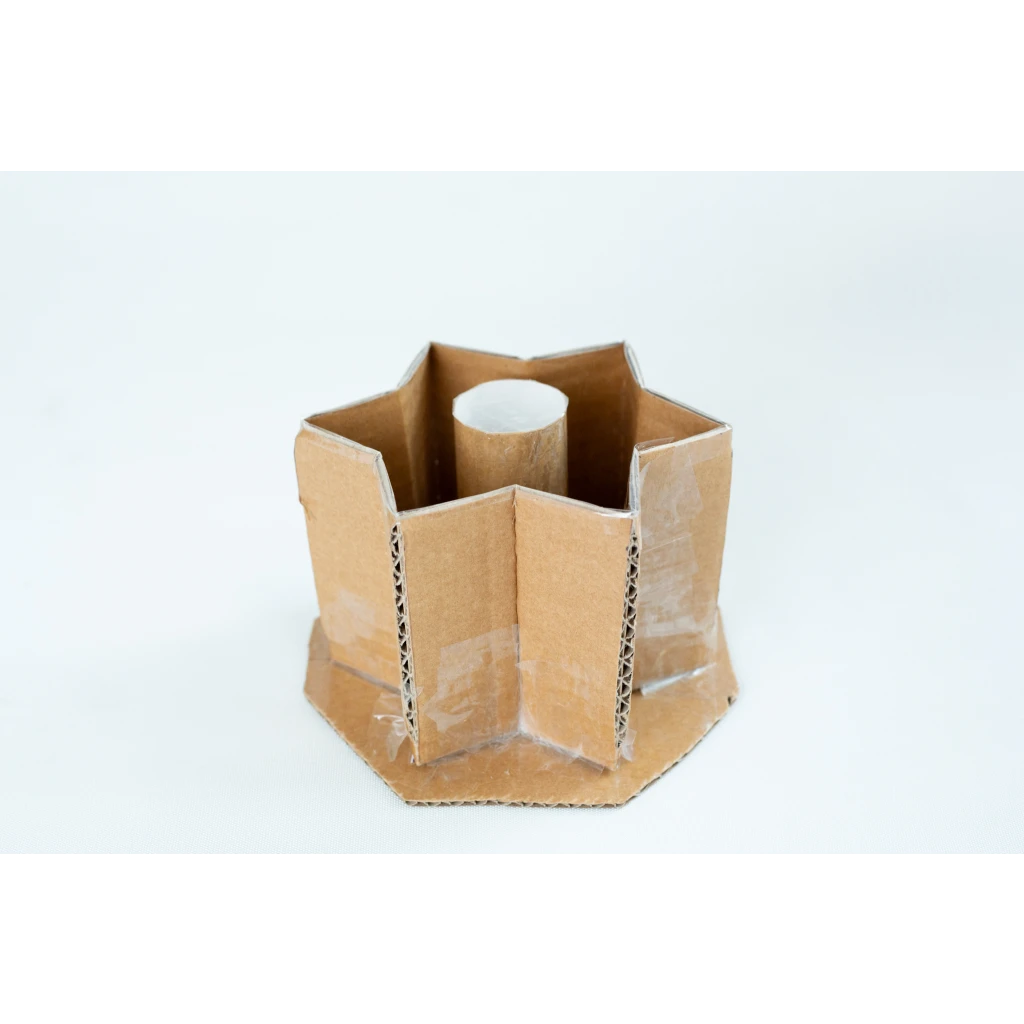
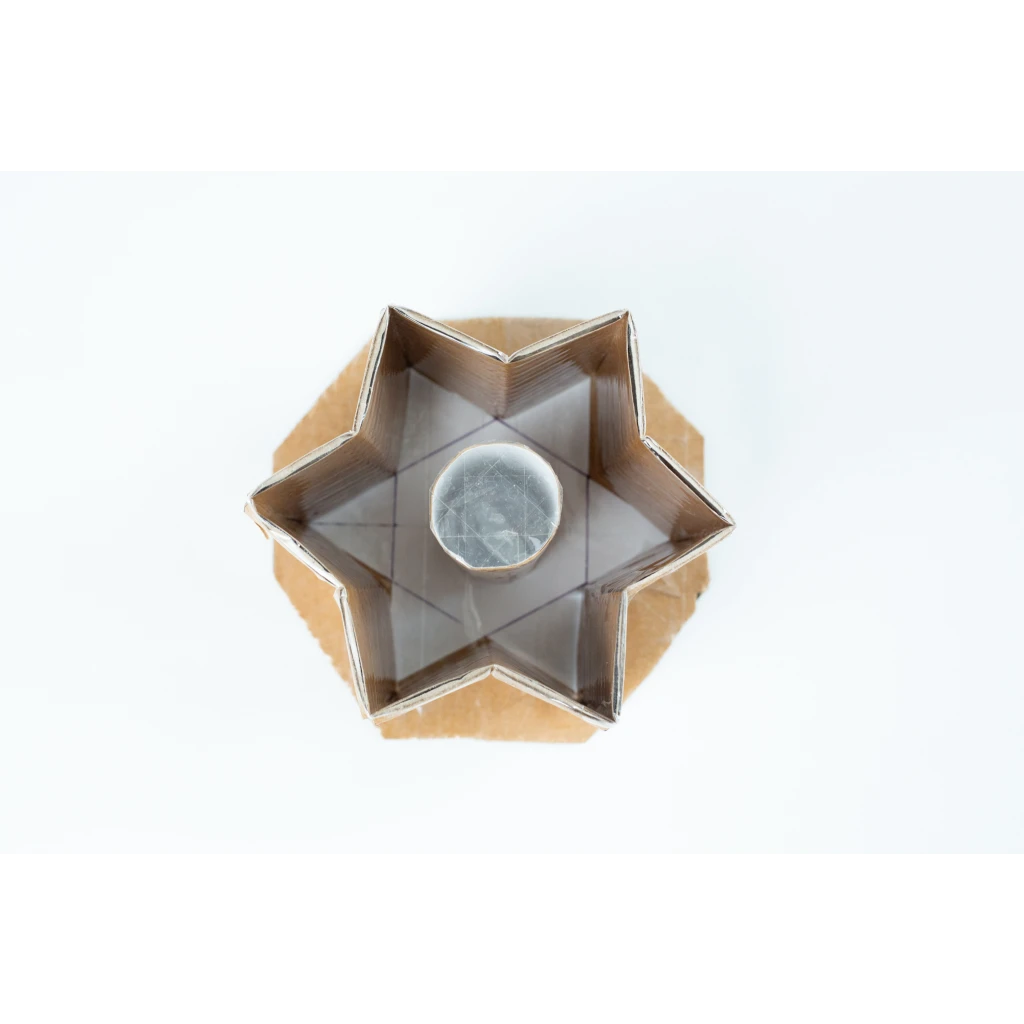
- Collect some corrugated cardboard, paper, and a toilet roll insert.
- Decide on the size you want, measure out two equilateral triangles of the same size, cut them out of the paper, and draw a line down the center of each triangle.
- Cut a square of cardboard large enough to contain the base of the star shape.
- Tape the edges of one triangle down to hold it in place. Align the triangles, one pointing up and another pointing down so they form a star shape. You can measure the points to be exact or do it by eye.
- Once the star is aligned, put some tape to hold it in place, then proceed to cover the base entirely with plastic tape.
- You will see that you have 12 edges of the points. Measure the size of one side of a point. You need this number to make the walls.
- You will need a rectangle of cardboard that’s 12 times the number you have just calculated. For example, if one side of a point is 4 cm, you will need a rectangle that is 4 cm x 12. i.e. 48 cm. The height can be any number you choose.
- Mark the rectangle of cardboard with these 4 cm widths. Cut each line with a scalpel, ensuring you don’t cut all the way through the cardboard.
- Fold each cut so that it forms a series of points.
- Align the first edge of the cardboard perpendicular with an edge of the paper star and tape it down. Use a ruler to push the tape down to ensure the wall sits flush with the base. Repeat the process with each wall.
- Once you have the last seam to join, tape it in place on the outside.
- You will need to tape up the seam on the inside to ensure the cardboard is not exposed.
- You can use a tape-covered toilet roll for an interior wall, or repeat the process with a smaller star for the inside. Remember to cut away the edges of the base if you use a star shape for the inside and ensure all areas in contact with the mycelium growth medium are covered with plastic tape.
Tips for filling and incubating the molds
- Prepare the inoculation space by cleaning the surface where you will be working. Wearing gloves and sanitizing hands and equipment help protect against contamination from competitor mold and bacteria in the environment.
- Sanitize the mold by spraying with isopropyl 70% and ensure the mold is fully dry before adding the inoculated substrate.
- Fill bases to the required depth before adding internal wall forms.
- Try to fill around each side equally, rotating the form as you go.
- Gently pull out the sides and lightly tap the object on a benchtop to ensure the material is adequately covering the needed areas.
- Ensure surfaces are smoothed over in the way you want before covering, though excess material can often be trimmed once the form is colonized.
- Cover the molds closely with plastic wrap, and poke a few small holes with a toothpick in the covering for air exchange. If you use larger holes and micropore tape, use two layers of tape for the filter.
- Objects should not be left too long in the molds, as mycelium overgrowth can sometimes hinder the demolding process.
- The objects should be ready in 5-7 days to remove from the molds. Once demolded, leave them for another 1-2 days inside a box so the white coating can become more uniform.
- If you leave the object longer in the box, you’ll get red and brown patterning, and the surface texture will also be affected.
- If you leave objects demolded and still growing for too long, they can lose their shape, and may even start fruiting.
Tips for demoulding the objects
- Cut away any stray mycelium that has overgrown the edges.
- Run a knife along the seams to ensure the mold can come away easily.
- Gently massage plastic forms to loosen the objects.
- Cardboard forms can be demolded by cutting sections and carefully pulling away the walls.
- Be careful with the forms at this stage, as they are much more robust when they are dried.
- Objects can be trimmed and even altered through compression at this stage.
- If cracks happen at this stage, objects can still be salvaged as pieces can be fused together by leaving them pressed together in an enclosed box for 24-48 hours.
Tips for drying the objects
- I recommend leaving the objects in a sunny spot for a week or so to dry naturally before putting them in an oven.
- Objects can be dried in the oven at 60-80 oC for several hours with the door slightly ajar. Dried objects will reduce to approximately 70% of their original weight.
- Making a cost-effective solar oven to dry mycelium-based composites.
- Here are some instructions for a solar oven.
As a fine arts graduate with a focus on sculpture from Sydney University and UNSW College of Fine Arts, I have explored anthropogenic relationships with the environment through various mediums. My notable works include "Resemblances," a solo installation at UNSW Galleries, referencing extinct Australian plants, and "Sydney Blue Gum High Forest", a miniature painting series highly commended at the Waterhouse Natural Science Art Prize (2020). Recently, my practice evolved through exploring sustainable sculpture, producing "From End to End," a myco-composite installation at Sculpture by the Sea (2022). I am continuing engagement with this innovative medium and experimenting further with the fascinating potential of designing with mycelium based composites.

